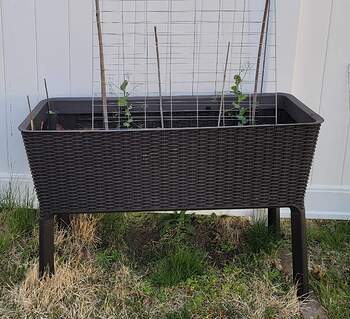It sounds like in-ground growing would be best, especially since the “volunteer” garlic pops up there.
In general, plants that make bulbs or fat roots, like garlic, onions, radishes, carrots, Florence Fennel/Finocchio, beets, etc., prefer their roots to grow in a cooler soil. In most locations, the soil will be cooler (especially a few inches down) than the air during the day, during the growing season. When the weather gets cold, the opposite is often true until the thermal mass of the soil eventually changes.
Want to grow the sweetest carrots, winter radishes, beets? Plant for fall harvests, when the roots are cool at harvest time. Part of this is because the roots, being cool, don’t metabolize sugars as quickly, while the foliage, warmed in the sun, keeps cranking out sugars to store. After comparing results with spring-sown vs, late summer sown carrots and beets, I stopped planting spring crops which matured when the soil was warm.
Garlic, like many Alliums, is keyed into day length. It’s basically going dormant for the hot season. This doesn’t give a grower many options as to planting or harvest times. Planting in the fall and harvesting during the summer is the norm. Since cooler root/bulb temperatures favor bulb growth, one can choose varieties to help get better yields, based on one’s climate.
In areas with very hot climates, varieties which are quick to mature are often best. In moderate or cooler areas, varieties which mature later are often more productive. The garlic variety Music should perform well in New England, as should German Extra-Hardy, Duganski and Siberian; these are hard neck (Rocambole) types.






